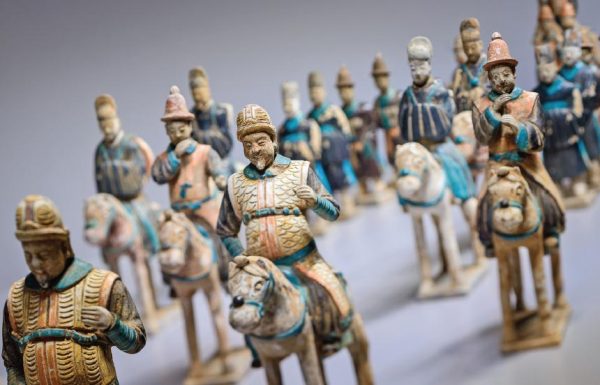Treasures and relics from Chinese dynasty on display in trailblazing exhibition in Russian capital

Relics from China’s Ming Dynasty (1368-1644) are being showcased at the Moscow Kremlin Museums, the first time that collections from the Shanghai Museum have been presented at the Russian venue.
The exhibition, entitled Ming Dynasty: The Radiance of Knowledge, kicked off last month and features artifacts from a time when interest in art, literature and music was at a high in ancient China.
The exhibition will continue at the exhibition hall of the Assumption Belfry and the exhibition hall of the Patriarch’s Palace in the Moscow Kremlin Museums till July 25.
The opening ceremony was attended by Olga Golodets, Russia’s deputy prime minister for social affairs; Sergei Ivanov, special representative of the president of Russia on the issues of environmental activities, environment and transportation; Li Hui, the Chinese ambassador to Russia, and Zhu Cheng, deputy Party secretary of the Shanghai Museum.
“The Moscow Kremlin Museums receive 2.7 million visitors every year, 1.7 million of whom are from China,” Ivanov said at the opening.
The exhibition showcases 156 artifacts, including items unearthed from the Shanghai region, as well as fine ceramic ware, lacquer, furniture and paintings, presenting all aspects of the lifestyle of literati and aristocrats in the Ming Dynasty.
The exhibition is split into four parts. Visitors will first step into a reproduction of a scholar’s study, where furniture, such as armchairs, a desk for calligraphy and incense stand, shelves for the storage of books and scrolls, are presented in the exhibition hall. Known as the four treasures of a scholar’s study, elegant ink slabs, vessels for dissolving ink, brushes leaning on ceramic stands and rice paper, are displayed on the desk.
Scholars during the Ming period had great admiration for ancient civilization and were passionate about collecting antiques. The second part of the exhibition features fine bronze, jade, ivory and silk kesi art from the collections of the Ming literati.
Porcelain manufacture in China reached new heights during the Ming Dynasty, when master craftsmen developed new colors of glaze and new technology for over-glaze on ceramics. The third part of the exhibition showcases some of the finest pieces from Jingdezhen, China’s capital of ceramic making during the period.
The fourth part is dedicated to artifacts discovered in the Shanghai region. A set of 66 parade figurines with colorful glaze is the highlight of this section. Four armored knights lead the way, followed by three trumpet players, four scholars on horseback, and a group of musicians and scholars. An important official sits in a sedan chair carried by eight men. According to Shanghai Museum, the figurines were made no later than the 15th century. Such a parade was only granted for the burial of princes of the imperial family.
Shanghai Museum presented an exhibition featuring Faberge eggs from the collection of the Kremlin Museums in 2012. Since then communications and exchanges between the two museums have taken place frequently. “We hope to further expand the collaboration between Chinese and Russian museums to wider fields, such as relic protection, academic and talent exchange,” Zhu from Shanghai Museum said at the opening ceremony.


